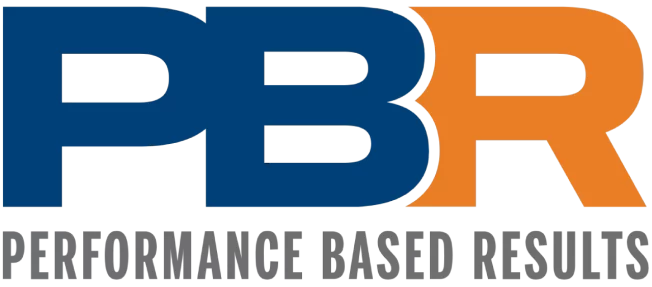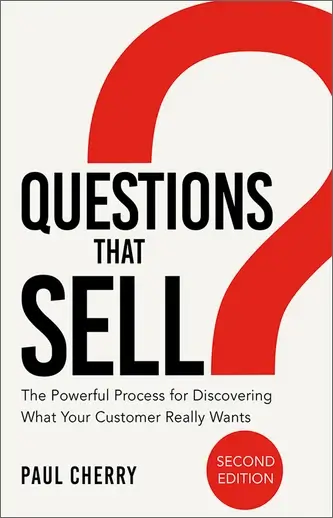Sales are the lifeblood of a company. Without steady sales, companies fail. Yet, some sales teams receive little, if any, training. Others receive inadequate one-hour seminars and are told they have just completed sales training. Is it any wonder why sales training doesn’t work?
The best salespeople in the world are akin to Olympic-level athletes. However, companies treat them as if they can simply hit the ground running and sell, sell, sell without any training at all. Consider how many hours go into training for the Olympics. An Olympic gymnast trains for years before hitting the mat with her teammates. We should do no less for our sales leaders.

There are many reasons why sales training doesn’t work. The right sales training techniques, however, can help your sales team train for their own unique “sales Olympics.”
Sales Training Not Working? Here are Five Reasons Why Your Training Tanks
A typical sales training scenario is a one-day, half-day or even shorter training session. An expert, consultant or high-producing salesperson is invited into a company to speak to their sales team. The expert may hand out books or binders, encourage team members to participate in team-building exercises and listen to plenty of motivational speeches.
After a day of receiving exhaustive knowledge on communications, persuasion, prospecting and follow-up, the sales team is told they have successfully completed training. They return to their regular work the following day, and soon the old habits return.
There are many reasons why some sales training sessions fail and others succeed. Here are five common reasons why sales training often fails.
1. Reason #1: Activities aren’t tailored to adults.
Considering the typical sales training model, it is unsurprising that companies fail to achieve their training ROI. Malcolm Knowles, an expert in adult education, identified several key factors for best practices for adult learning. Adults need training that speaks to their learning needs, not training modeled after typical university classroom practices.
Adults engaged in learning activities need to:
- Know why they are participating in an activity
- Feel invested in the outcome — “What’s in this for me?”
- Learn through doing. Newly learned activities must be practiced to become second-nature.
- Solve problems. Solving problems helps place a new activity into an adult’s long-term memory.
- Learn in a social setting. Adults, even more than children, prefer to learn while among peers.
- Tap into their life experience. They forge connections between what they have just learned and real-life scenarios and situations they remember.
- Integrate new knowledge with existing information. They like to see a connection between what they have just learned with things they have previously learned.
Assuming adults who attend a one-day seminar will become exceptional salespeople the following day is an unreasonable expectation. Sales training issues aren’t problems with salespeople — they are problems with the model used to train adult learners, whose needs remain unmet by lecture-style workshops.
2. Reason #2: Not enough time allowed for results.
Another factor often overlooked in why sales training doesn’t work is leadership. Companies may invest in sales training, but if the company’s leadership team doesn’t support the time required to learn new skills, sales training may fail.
Companies often seek immediate ROI for investing in sales training, but as we have seen, this is an unrealistic expectation. Failing to give the participants enough time to learn, practice and perfect new skills is like asking an out-of-shape adult to run a 10K next week — you can ask, but the person is likely to fail (never mind get hurt!).

To truly enact a culture of continuous learning in your organization, you must “put your money where your mouth is” and pay more than lip service to sales training. Corporate leaders must be willing to allow salespeople to attend training. They must be patient while new skills are learned. Systems must be set up to monitor, measure and report on sales results, with the data used not to punish low performance, but instead to coach and train for improvement.
3. Reason #3: Changing behavior feels too risky.
Another reason why sales training doesn’t work is the perceived risk of changing one’s behavior, versus the reward of continuing to do things as they have always been done.
People like to stay in their comfort zone. That’s why making changes is difficult — even though the current situation is undesirable, changing habits requires moving outside of one’s comfort zone. People try to avoid discomfort at all costs.
Now, consider a salesperson who performs moderately well. She may be competent at her job but not a stellar performer. You send her to a sales seminar where the team leader asks her to take specific risks to generate more leads and increase her closing rate.
Taking those risks may backfire, however. She may spend more time on these activities that are risky, and less on activities she knows how to perform, albeit not as well as she’d like. Or she may simply choose the less risky activities because they produce known results, rather than take a chance with something that may perform better — since the status quo is superior to failing all together at the new methods.
People are driven by fear of risk and promise of reward. If they look around them and see others remaining in their comfort zone, they too will want to continue doing what they’ve always done. A culture of sales excellence must be supported for everyone on your sales team so a rising tide lifts all boats.
4. Reason #4: Lack of continuous modeling and monitoring.

When you were in school, teachers provided continuous monitoring, as well as modeling, of the preferred outcome. Sales training is no different.
Sales training must include both continuous monitoring to ensure efforts are being made to learn and retain new materials, as well as modeling to show what’s meant by the new techniques. Seasoned salespeople can be effective teachers if learners spend time simply watching how they interact on the phone or in person with prospects. Both monitoring and modeling are often lacking in a typical training program, but can easily be added to correct the mistake.
5. Reason #5: Lack of leadership buy-in and participation.
Can you imagine a football team coach who never attends practice? Or the captain of the hockey team telling his players he’s too busy practicing his skating to attend team practice? The same thing happens with many sales managers: They assign personnel to training without attending training themselves.
When sales managers fail to attend training, it leads to a big disconnect between “Do as I say” and “Do as I do.” They give mixed messages about the importance of training. Perhaps more importantly, they cannot model the appropriate behaviors (Reason #4) because they haven’t learned alongside their staff what’s important.
Managers must be willing to commit the time and effort to sales training alongside their team members. Actively participating in sales training not only encourages team members but demonstrates support for the key concepts being taught. Whether it’s participating in classroom activities alongside trainees or role playing along with them, when the manager participates, training is more effective.
Turning Around Bad Sales Training: What Results-Producing Training Looks Like
Don’t discount all sales training programs simply because you’ve had a bad experience. Many organizations have found the secret to effective sales training. Your company can, too.
Start With the End in Sight: Set Goals
The first step to creating an ideal sales training model is to begin with the end goal in mind. Establish key goals, metrics and measurements first, before creating your training.
Identify what you would like the sales team to learn, know and do after the training is completed. The goals for product knowledge sales training may be quite different from the goals for sales skills training. Identifying which skills to focus on first, and the desired outcomes, will have the most impact.
When you have a goal established, you can then measure progress toward that goal. Without a goal, there is no clear way to measure the outcomes of the training.
Make Training Interactive
Interactive sales training includes plenty of case studies, role-playing and practicing new skills in a safe, supportive environment. Interactivity not only helps adult learners retain what they have learned, but it can also provide valuable feedback from the coach or trainer leading the session.

The more skills are used, the better they are retained. Practicing new skills in training sessions helps build new pathways in the mind that place information into long-term memory.
Additionally, practicing in a safe, supportive training environment takes much of the risk out of trying new activities. A supportive and encouraging coach ensures people know when they have demonstrated a new skill successfully.
Identify One Skill to Work on
Training can feel overwhelming when a great deal of information is shared in a short timeframe. One way to make learning feel less difficult is to identify one skill out of many learned during a training session that can be practiced consistently for improvement.
During the sales training session, ask participants to jot down notes on the one thing they will take out of the session and back into their work life that will benefit them the most. Chances are good that participants will have several ideas. Help them narrow down the list to one specific skill that will make the biggest positive impact on their jobs. When people can see results quickly, they are highly motivated to continue with a new behavior.
Write an Agreement
It’s easy to leave a sales training program with good intentions only to forget them when work gets busy again. Ask participants to write down the skill they plan to practice for improvement.
Writing the skill down as an agreement or a contract with themselves serves several purposes. The mere act of writing helps transfer material into long-term memory. It also makes the promise written out in the document seem binding, or important enough to the subconscious mind that it pays attention to it. The result tends to be a higher likelihood of completing the promised task.
Self-directed goals are better than outer-imposed goals. When people identify what they wish to learn, they tend to give it more credence than goals imposed on them by others. Avoid the tendency to point out what your sales team needs to work on. They may agree, but work on the goal only to please you or the company.
A better motivation is to please themselves — to attain a feeling of satisfaction and achievement. This is best accomplished by setting their own goals.
Group Reinforcement
After the sales training, establish support groups or networks for the participants and give them the time they need to meet, practice and reinforce the positive skills they’ve learned. Because adults try to keep up with those around them, if the entire team is focused on achieving their agreed-upon goals, individuals are more likely to participate and successfully complete the task.
Seven Tips to Build a Positive Sales Culture: Your Long-Term Strategy for Success
These techniques for good sales training can be used with a one-day seminar, a workshop or short-term training. To truly create a sales-driven culture, you’ll need a long-term strategy of consistent, positive support for sales improvement.
1. Continue with training: Make training continuous with a series of workshops, online seminars, lunch-and-learns and other sessions. Regular sales training should reinforce previously learned skills as well as help people learn new tips and techniques. Online learning and blended-model learning, a combination of online and in-person training, is an affordable and effective way to offer continuous training.
2. Listen and learn: Build a library of audiobooks, podcasts and other materials to provide your team with learning on the go. They can listen to sales training and motivational materials during transit to appointments or on their commute to and from the office.
Some classics of sales include Dale Carnegie’s How to Win Friends and Influence People, Brian Tracy’s The Psychology of Selling and many others. Don’t forget books on communication skills and, of course, a bank of product resources to help your salespeople increase their basic sales knowledge. The Kenan-Flagler Business School offers a list of the 10 best sales podcasts. You can download Apple iTunes to your smartphone or iPhone and listen on the go.
3. Develop a case study library: Newcomers to the sales department may gain much from a bank of case studies your team has created. Although some sales skills are product- and company-agnostic, others seem to work best in specific situations and industries. Use this foundational knowledge to shorten the learning curve for new employees and to help everyone improve.
Because salespeople are often on the go, written case studies may not work for your team. Instead, spend five minutes at your weekly sales meeting sharing case studies and record them with a small digital recorder. Upload them to the company intranet or share links via email. Staff can listen to them in the car, at home or if they have a few minutes at work.
4. Personal coaching and mentoring: Partnering up skilled salespeople as observers and mentors with new or less-skilled sales members may also help. Learning from peers in a safe, supportive environment is often an effective way to overcome personal blind spots. Because the information is coming from peers, it may be easier to understand or easier for participants to ask questions.
5. Allow time for a change: It takes time to learn and apply new skills. It can take even longer to demonstrate results. While you shouldn’t have to wait forever to see positive improvement, demanding immediate change is counterproductive. Allow your employees time to learn, grow and change. Make sure they have enough structured time in their day for learning and training activities.
6. Measure results: Hold people accountable for their sales goals. Use the goals they have self-identified in training to measure progress. Metrics to monitor include lead generation, sales calls, closing rate and revenues generated. Don’t forget to measure customer satisfaction, upsells and cross-sells, too. These, when taken together, can clearly show how much of an impact sales training has made.
7. Provide feedback: Managers can accompany team members on sales calls and provide immediate feedback once the meeting has ended. Providing feedback immediately after a situation helps reinforce both what went right and what could be changed in the future. Just make sure this feedback is given in private and not in front of the client!

Plan for Success
For long-term sales success, you need a plan. Begin your plan by analyzing and measuring the current performance of your sales team. Get to know each team member as an individual. Each person contributes something unique to the team while having specific weaknesses in their work skills. Identifying strengths and weaknesses is the first step to planning effective sales training.
A clear roadmap for sales training includes both big-picture thinking and alignment to corporate goals and KPIs. Aligning training activities to the company’s overarching key performance indicators (KPIs) and goals helps build executive buy-in, as well as necessary budget, for your proposed sales education program.
With these methods, both phone and field sales team members can demonstrate improvement over time. Having the right sales training program means tailoring it toward your team, their goals and their needs, and the company’s needs overall. With this in place, you can dispel the myth of sales training issues and demonstrate its positive benefits instead.
If you need help designing a customized, fun and highly charged training program to help you win more customers and grow your market share, contact Performance Based Results today. We’ll travel anywhere in the country where training is needed, and even provide guaranteed results, so long as your team members are putting in the recommended effort. Contact Paul Cherry at 302-478-4443 or check out our website today!






